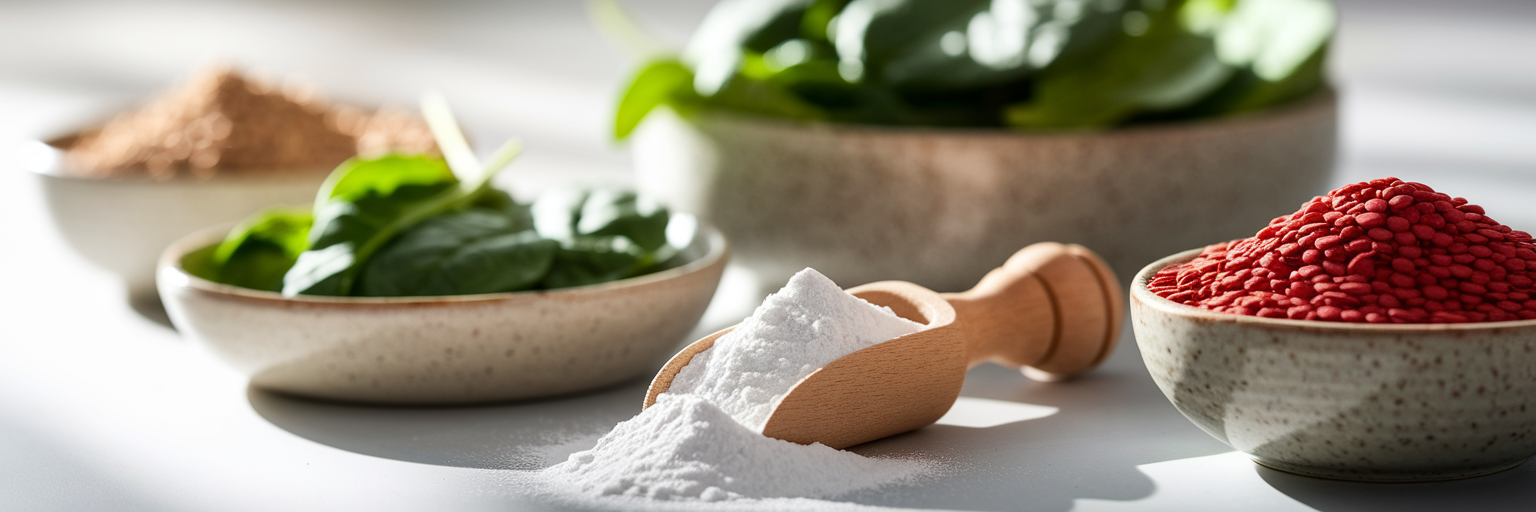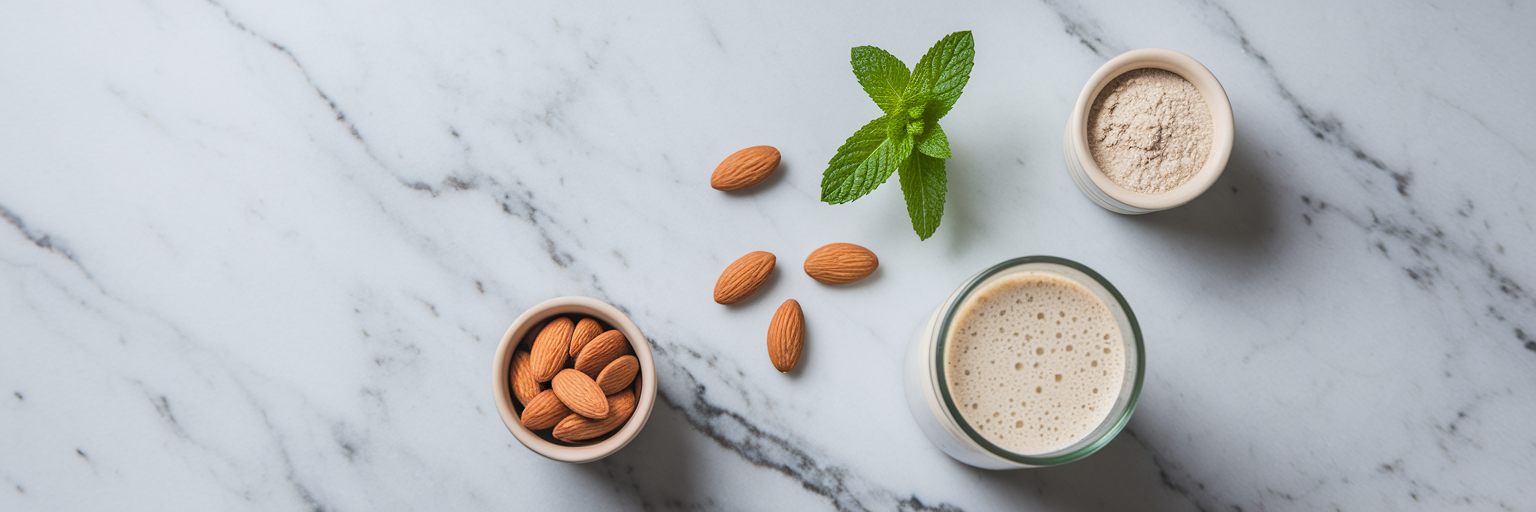If you're a plant-based athlete, you know the feeling. You've dialed in your nutrition and training, but you hit a performance plateau that just won’t budge. This is a common experience, and it often points to a simple nutritional opportunity: the creatine gap.
Why Creatine Is a Game-Changer for Plant-Based Athletes
Creatine is an organic compound that helps your muscles produce energy during heavy lifting or high-intensity exercise. Since it's primarily found in meat and fish, vegans and vegetarians naturally have lower creatine stores in their muscles. But this isn't a disadvantage. Think of it as having more room for improvement. Supplementing with creatine bridges this gap, and the results can be significant.
The primary vegan creatine benefits are tied directly to performance. With saturated muscle stores, you can push out those extra one or two reps on a heavy lift, sprint a little harder, and sustain your energy through intense circuits. It provides the immediate fuel your muscles need to perform at their peak. For a deeper look at the research, you can explore our article on creatine benefits and how effective creatine monohydrate really is.
But the advantages aren't just physical. Creatine also supports cognitive function. A study highlighted by Vegan Health found that supplementing with 5g of creatine daily for six weeks increased mental capacity in vegetarian and vegan students. This means better memory and quicker thinking, a fantastic bonus for overall wellness.
Here’s the most compelling part: because your baseline levels are lower, you may notice a more dramatic and faster response to creatine supplementation. This makes it one of the most impactful plant based athletic supplements you can add to your routine.
Choosing a High-Quality Vegan Creatine
Let's clear up a common misconception right away: creatine is not an animal product. While it's found in animal tissue, the creatine you buy as a supplement is synthesized in a laboratory. The starting materials are simple compounds that are not derived from animals, making the final product inherently vegan-friendly.
So, what should you look for? The most important thing is to choose a product that is explicitly labeled as 'vegan' or has a third-party certification. This guarantees that no animal-derived ingredients were used at any point in the manufacturing process, including in the capsules if you opt for that form instead of a powder.
We strongly recommend sticking with creatine monohydrate. It is the most extensively studied, scientifically proven, and cost-effective form available. You might see other "designer" creatines on the market that promise better absorption, but these claims are often not backed by the same mountain of research that supports monohydrate.
The takeaway is simple. Your best choice is a pure creatine monohydrate powder from a brand you trust. For a trusted, pure, and vegan-friendly option, you can check out our Creatine Monohydrate. This ensures you get a clean, effective product without any unnecessary additives or fillers.
Your Step-by-Step Dosing Protocol
Getting started with creatine is straightforward. There are two common approaches to get your muscles saturated, and both are effective. The main difference is how quickly you want to see results.
The Optional Loading Phase
If you're looking for the fastest possible benefits, you can start with a creatine loading phase vegan protocol. This involves taking 20 grams of creatine per day for 5 to 7 days. To make it easier on your system, it's best to split this into four 5-gram doses taken throughout the day. This method quickly fills up your muscle's creatine stores. While it works fast, it's completely optional.
The Daily Maintenance Phase
The standard approach, and the one you'll follow after a loading phase, is the daily maintenance dose. This is simply 3 to 5 grams of creatine per day. This amount is all you need to keep your muscle creatine levels topped off. Taking more than this won't lead to better results, as your muscles can only hold so much.
Consistency is Key
This is the most important rule. For creatine to work, you must take it every single day. That includes both your workout days and your rest days. Consistency ensures your muscles remain saturated, ready to perform whenever you need them. If you have more questions about supplementation protocols, our FAQs page is a great resource.
| Approach | Daily Dose | Time to Muscle Saturation | Best For |
|---|---|---|---|
| Loading Phase + Maintenance | 20g for 5-7 days, then 3-5g daily | ~1 week | Athletes seeking the fastest possible results. |
| Maintenance-Only | 3-5g daily from the start | ~3-4 weeks | Individuals who prefer a simpler routine or have sensitive stomachs. |
Timing Your Intake for Optimal Absorption
Once you've committed to daily use, you might wonder when is the best time to take creatine. While consistency is most important, a little bit of timing can give you a slight edge.
Many athletes prefer taking creatine shortly after their workout. Think of your muscles post-exercise as sponges, primed and ready to absorb nutrients to begin the recovery process. Taking creatine during this window helps ensure it gets delivered right where it needs to go.
You can enhance this effect with the "carbohydrate connection." Consuming creatine with a source of simple carbohydrates, like fruit juice or a banana, causes a small insulin spike. Insulin acts like a key, helping to transport creatine into your muscle cells more efficiently. This is why mixing it into a post-workout shake with fruit is such a popular method.
Taking it 30 to 60 minutes before your workout is another excellent option. This ensures the creatine is readily available for your body to use as energy during your training session. Ultimately, the best time to take creatine is the time that you will remember to take it consistently. Don't stress over the perfect window. Taking it daily is far more important than timing it perfectly.
Managing and Minimizing Potential Side Effects
Creatine is one of the most researched supplements on the planet, and it has an excellent safety profile. However, it's smart to be aware of a few potential side effects, all of which are easily managed.
- Water Retention: You might notice the number on the scale go up slightly when you first start. This is just water being pulled into your muscle cells. It's a good sign! It means the creatine is working to hydrate your muscles. This effect is usually temporary and more noticeable during a loading phase.
- Dehydration and Cramps: Because creatine draws water into your muscles, you need to support your body with adequate hydration. The simplest fix is to drink more water throughout the day. This is the number one way to prevent any potential cramping.
- Stomach Discomfort: A small number of people experience bloating or an upset stomach, especially with larger doses. If this happens, try splitting your daily 5-gram dose into two smaller 2.5-gram servings. Also, always take it with a meal or plenty of liquid, never on an empty stomach.
Finally, let's address the persistent myth about kidneys. The idea that creatine harms healthy kidneys has been repeatedly debunked. In fact, extensive research reviewed by the National Center for Biotechnology Information (NCBI) confirms that long-term creatine supplementation does not appear to have negative effects on kidney function in healthy individuals. As with any supplement, if you have a pre-existing kidney condition, it's always best to consult your doctor first.
Pairing Creatine with Vegan Protein for Maximum Results
If creatine provides the energy for your workout, think of protein as the crew that rebuilds and strengthens your muscles afterward. Combining creatine and vegan protein creates a powerful synergy that supports both performance and recovery.
Here’s how to take creatine vegan style for the best results: mix your daily 3-5 gram dose of creatine powder directly into your post-workout protein shake. This is incredibly efficient. The protein and carbohydrates in the shake create that helpful insulin response we talked about, which enhances the absorption of both the creatine and the amino acids from the protein.
Look for high-quality vegan protein sources like pea, soy, or brown rice protein. For a delicious and effective option, try mixing your creatine with our Chocolate Vegan Protein. The combination replenishes your energy stores, provides the essential building blocks for muscle repair, and helps you recover faster so you're ready for your next session.
This simple stack is one of the most effective strategies for any plant-based athlete looking to build strength and improve recovery. If you need some inspiration for your post-workout shake, check out these 3 easy vegan protein recipes you'll actually crave.






